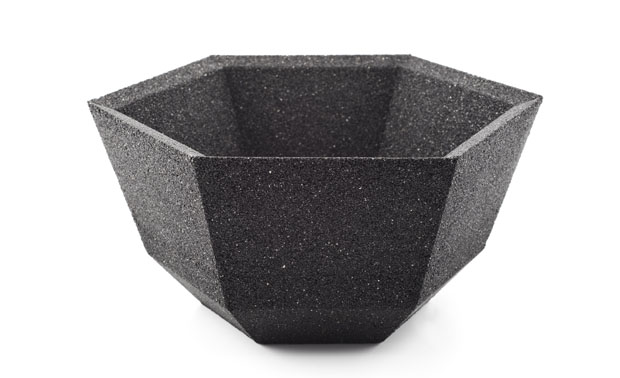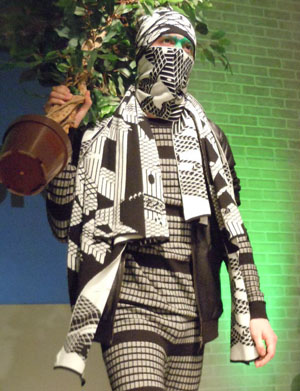DesignMarch 2010
Furry chairs, sand bowls, and wildly-patterned knits at Iceland’s second-annual design festival

While hauntingly beautiful landscapes, elusive fairies and mind-blowing music usually come to mind when thinking of Iceland, DesignMarch, the second annual weekend festival organized by the Iceland Design Center, aims to add design to that list. Following an economic collapse of epic proportions, the nation is now looking for ways to reinvent itself on the world stage.
The event highlighted not only the tremendous can-do spirit of the Icelandic creative community, but also the long road to recognition that it faces. My visit was filled with equal amounts of inspiration and evidence of how far the country still needs to come. Studio visits to the shared space of Sruli Recht and Megan Herbert, and the design group Studiobility, showed Reykjavik at its most promising, while a brief tour of three local furniture manufacturers revealed an industry lacking the portfolio to compete in the global furniture market.
(Pictured at right, the Pirate Leg by Gudrun Lilja Gunnlaugsdóttir at the Studiobility exhibit.)

A walking tour of the local shops with designer Stefán Pétur Sólveigarson and a visit to the Reykjavik design emporium Epal (Iceland’s equivalent of Luminaire) led to some great discoveries, such as Jón Björnsson’s Sandskálar (above, seen at Kraum), a bowl made through casting black beach sand. However, these very tours also brought out how many Icelandic designers are forced to work independently, without any support. With the exception of the recently-launched accessory brand Lyng, few mainstream production opportunities for Icelanders with ideas seem to exist.

Running in conjunction with DesignMarch, the Reykjavik Fashion Festival consisted of a well-coordinated series of runway shows and presentations spearheaded by the incredibly gracious Rúnar Ómarsson, director of the snowboard apparel brand Nikita. The RFF, originally created as an antidote to the deflated Iceland Fashion Week, featured some incredible talent. Look for future Cool Hunting coverage on the forward-thinking stylings of Mundi (left) and the patterned knitwear of Lúka.
Design as an occupation is still an emerging concept in Iceland. In fact, the Iceland Academy of Arts Department for Design and Architecture is less than ten years old. Nurturing talent at home, enticing leading practitioners for visiting professorships, building a renowned curriculum—these things take both time and money. Still, I saw tremendous potential for the future of Icelandic design.
To truly emerge as a voice in the global design market, Iceland will require more than a festival. DesignMarch makes a great beginning but Iceland needs to plumb the depths of its collective consciousness, tap into region-specific raw materials and harness those mystical, folkloric qualities that will imbue products with resonant narratives.
Check out the slideshow below for some additional favorites, both old and new, from Reykjavik.






















